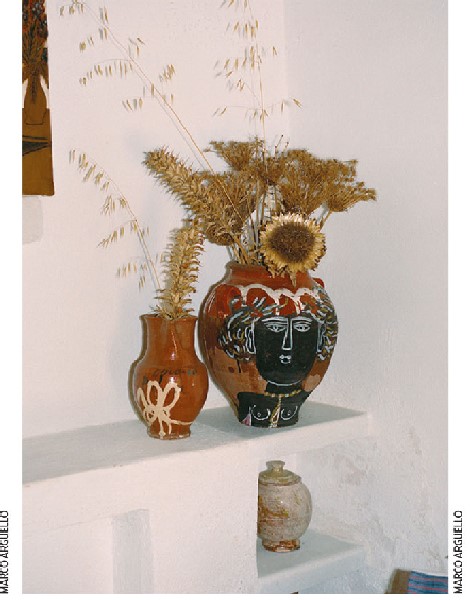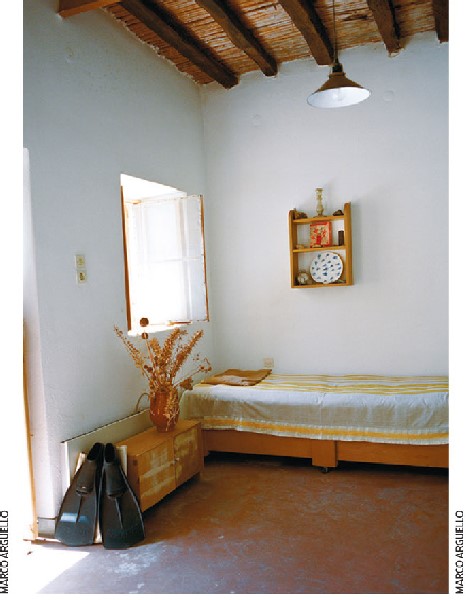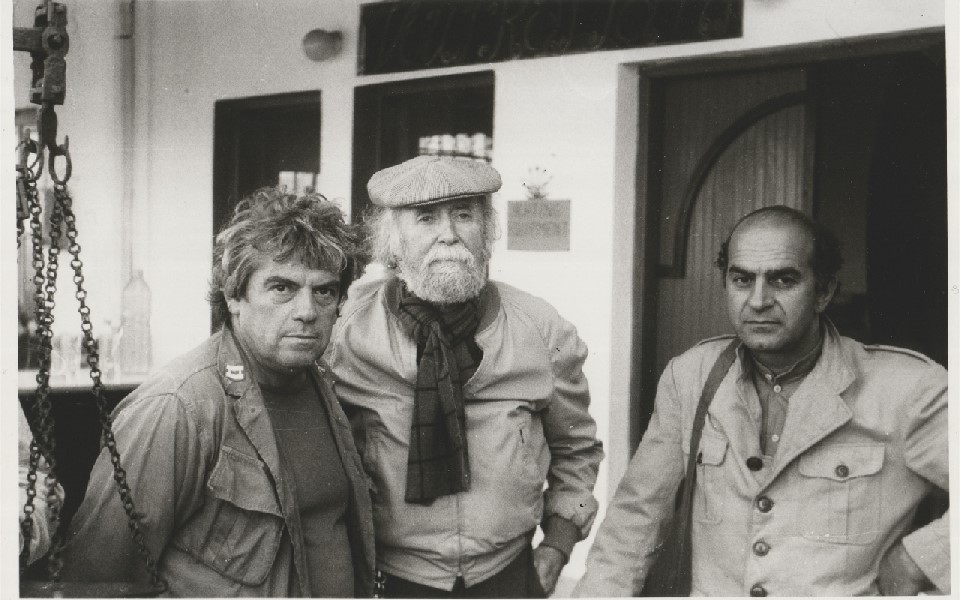This is a story that begins in the 1960s, at a time when Greece was still pristine and charming, resembling the poems of Odysseus Elytis. It was then that artist Alekos Fassianos met the Cycladic island of Kea (Tzia) for the first time. It was in the spring of 1967 when a family friend asked him to accompany her to the island to fulfill a vow. The beauty of the place surprised him, initiating a love affair with Kea that was both thunderous and long-lasting.
“Gradually, my love for the sea made me settle in Kea, the beautiful island full of surprises, with unexpected and secret beaches, beautiful hanging gardens in small valleys, waters that run secretly and fill the springs. There, on this island that combines the wildness of the departed with the serenity of the soul, we fished for hours on end with Stefanou, Sperantzas, Migadis, Merkourakis and Nikos Dalaretos, under the brilliant sun, we spent our day unraveling and flaunting the colorful fish,” he wrote in the small book “Fish of Kea” (Vourkariani, 1986), with its hand-made illustrations and cute, short texts.

© Courtesy Alekos Fassianos Estate. [Marco Arguello]

© Courtesy Alekos Fassianos Estate. [Marco Arguello]
Much of what was happening in that era of innocence is permanently lost in the modern summers of the Cyclades. The company of painters and keen fishermen of Kea gradually thinned out, most of Alekos Fassianos’ peers are now walking in their ninth decade of life, while the renowned artist himself passed away in January 2022. But an important sign of his presence on the island keeps alive the memory of another aesthetic and culture. The art studio-residence of Alekos Fassianos is located in Ioulida, Hora of Kea. It is a house of typical Cycladic architecture overlooking the Aegean Sea, based on austerity and purity of forms: white lime, ochre and stone.
The studio, which last year opened just once for an educational program with children of the island, becomes this year, from July 15, a place for everyone to visit. This little house was Fassianos’ home when he returned to Greece from Paris. It is a simple house, reflecting his simple tastes, and everything that adorns it – from the painted furniture to the curtain rods and from the metal railings to the door knobs – bears his personal touch.
“He went there in the summers to enjoy the Cycladic light, which he loved, to paint, to cook the fish he caught, to receive his friends and admirers who wanted to see him create, sometimes paintings, sometimes utilitarian objects, toys, sculptures, with the simplest materials. He was constantly working on something in his ‘nest,’ and when he got tired he would lie on his small bed with the woven bedding,” recounts his wife, Mariza Fasianou.

Fassianos lived a quiet, peaceful life on Kea. He was devoted to his art and painted all day, usually sitting on the floor of his studio from very early in the morning. He always had his materials with him, he went with his friends to the sea, ate in the small tavernas of the island, and returned again to the studio.
In the following years, one of these friends, Tziotis Nikos Dalaretos, opened a gallery on the island, which was to become a creative hub. “Vourkariani” began its operation in 1975 and soon became a bohemian hangout, a meeting place for important Greek artists such as Sperantzas, Tsarouchis, Kakissis, Stefanou, Psychopedis, Christina Morali, and others.
The artists worked in their studios and in the courtyard of the gallery, where they later exhibited their works. A characteristic collaboration of Fassianos with “Vourkariani” is the publication of the picture books “Fish of Kea” and “Little Cubs of Kea,” which show his sensitivity and love for seemingly insignificant things that he saw with another eye.
The atelier-residence of Alekos Fassianos is located in Ioulida, near the Piazza. It is open Thursday – Sunday and will remain open until September 17, 2023.
This article was previously published in Greek at kathimerini.gr.












